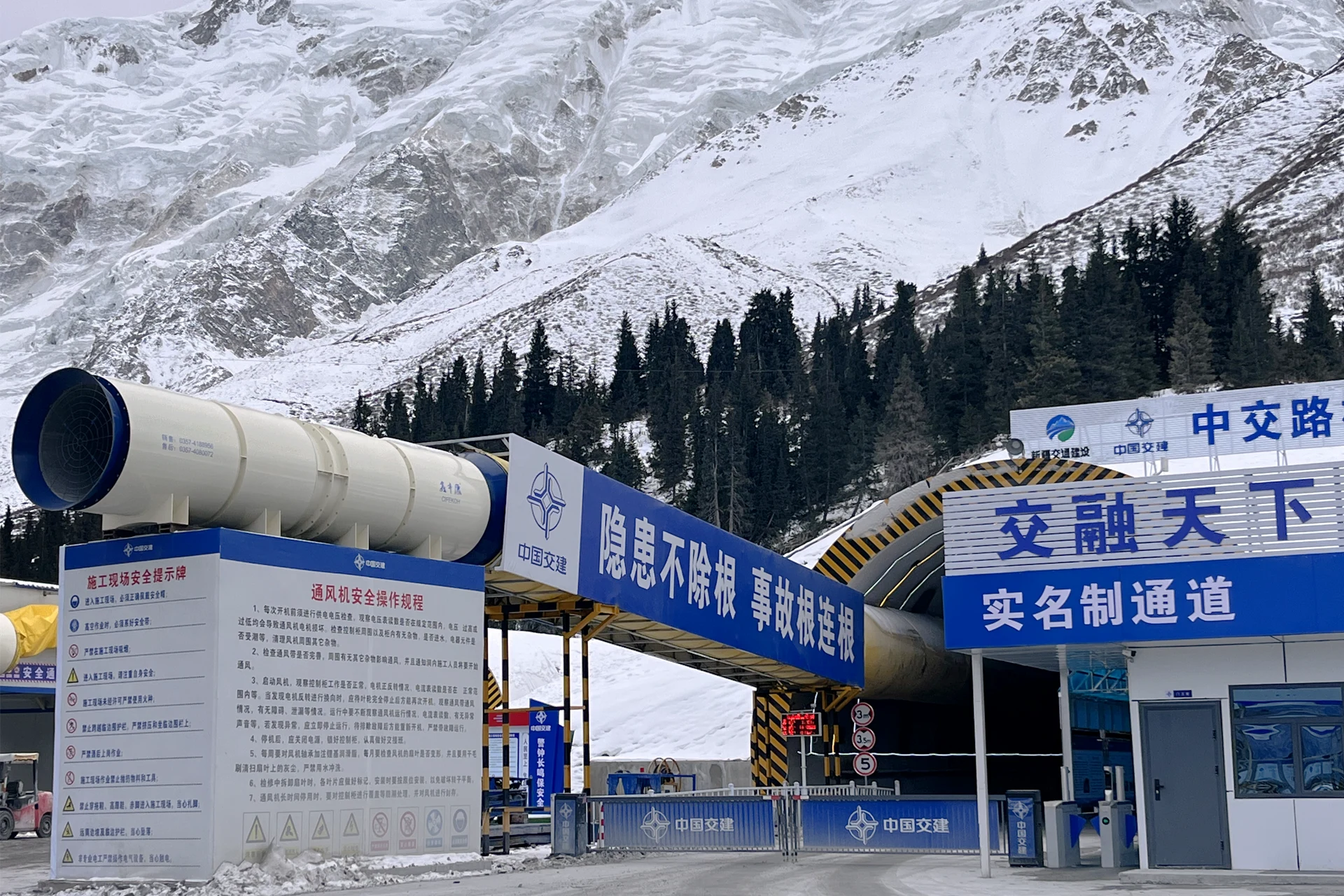Tunnel
Special Tunnel Fan Construction Case

Installation Precautions for Tunnel Ventilation Fans on Site
1. The fan must be installed securely, and no debris should be piled within 5 meters in front of and behind the fan to avoid affecting the fan's airflow and prevent foreign objects from entering the fan and damaging the blades. The fan should have overload and pressure limit protection devices, which can automatically shut down in case of abnormalities to provide protection.
2. A metal grille should be installed at the air inlet of the fan to prevent foreign objects from entering the fan and causing blade damage or accidents.
3. The fan operator must follow the operating procedures to prevent mechanical accidents; ensure electrical safety, and when the power supply is cut off, the power must be disconnected. Do not touch the rotating parts or perform maintenance while the fan blades are still rotating.
4. Non-operating personnel are strictly prohibited from turning on the fan's power without permission. Before the fan operator turns on the power, they should confirm that there are no personnel repairing or extending the air duct in front to prevent injury from the airflow.
5. Various vehicles and personnel should maintain a certain distance from the fan and air ducts while moving inside the tunnel, paying attention to protect the ventilation pipeline.
6. Ventilation workers entering the tunnel must wear safety helmets. If any air leakage or other faults are found in the ventilation system, they should immediately notify the relevant personnel for handling.
7. When extending, replacing, or repairing air ducts, the personnel involved should ensure the protection of transportation vehicles in the tunnel to avoid falling accidents.
8. The fan support frame and the load-bearing cables of the air ducts should be checked regularly to prevent breakage due to rust or other reasons that could affect ventilation.
Analysis and Troubleshooting of Ventilation Fan Failures
| Failure Characteristics |
Causes of Failure |
Failure Identification and Troubleshooting Methods |
| Motor does not turn |
1. Power supply is off |
1. Check the power supply |
| 2. Improper handling of the fan causing the blades to jam |
2. Repair the air duct |
|
| Ventilation fan airflow is small |
Power supply is reversed |
Check the motor wiring |
| Airflow reduction |
1. Reduced speed |
1. Check the power supply voltage |
| 2. Air inlet blockage |
2. Clear and unblock the air inlet |
|
| 3. Air duct leakage |
3. Repair or replace the air duct |
|
| Air pressure reduction |
1. Gas density is too high |
1. Observe and adjust the gas being transported |
| 2. Impeller deformation or damage |
2. Replace the damaged impeller |
|
| Vibration |
1. Foundation is unstable, sunken, or deformed |
1. Repair and reinforce the foundation |
| 2. Main shaft is bent or deformed |
2. Replace the main shaft |
|
| 3. Rotor imbalance |
3. Balance the rotor or replace it |
|
| 4. Pipeline vibration |
4. Reinforce the pipeline or adjust the piping |
|
| High bearing temperature |
1. Bearing damage |
1. Replace the bearing |
| 2. Incorrect selection of lubricating grease |
2. Re-select and replace with suitable oil |
|
| 3. Rotor vibration |
3. Balance the rotor |
|
| Loud noise |
1. Fan impeller wear |
1. Replace the fan impeller |
| 2. Air inlet damage |
2. Repair the air inlet |
|
| Low motor insulation value |
1. Coil is damp |
1. Dry the coil |
| 2. Insulation damage or aging |
2. Replace the coil |
Ventilation Fan Operating Procedures
1. Before starting, check for foreign objects inside the fan. If there are any, they must be cleaned up promptly.
2. Check if the voltage is normal.
3. Press the start button to turn on the machine, listen for normal fan sounds, and check for any unusual noises. If there are unusual noises, stop the machine immediately for inspection.
4. On-site electricians should routinely check if all electrical components are normal, and check for any looseness in terminals, wire ends, and connection screws.
5. Regularly add lubricating oil, every 500 hours of operation, adding 50-60 grams per bearing each time (some fans do not have grease fittings and use sealed bearings that do not require grease, maintenance-free bearings last over 20,000 hours);
Note:
(1) New fans have already been greased, do not add more grease until the running time is reached;
(2) Grease type: Molybdenum disulfide or No. 3 lithium grease.




